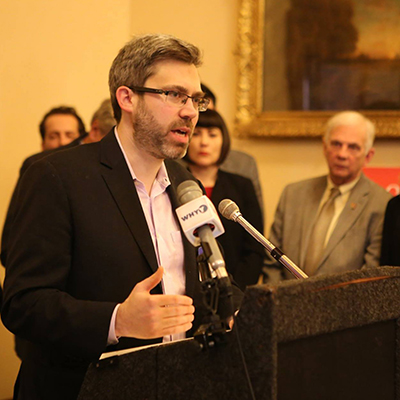
Letter in support of conserving the Drew Forest
Dear Friends: August 8, 2022
On behalf of four local, regional and state environmental organizations, and our hundreds of thousands of citizen members and activists, we wish to issue our vociferous support for the full conservation of the entire 53 acres of the Drew University Forest. There are many land-use battles across the state, some that are waged with scant environmental evidence. This is not one of them, and the double whammy precedent of the potential development of such a unique ecosystem that the Drew University Forest represents along with the actions by the University hoping to cash out one of its most treasured places compel us to action.
We also want to state clearly that we have worked with the town of Madison, Mayor Robert Conley and their municipal environmental staff in the past and it’s clear that the town of Madison clearly values environmental protection and has created a record of sustainability that is unquestionable.
As you well know, the 53-acre Drew Forest is a unique ecosystem. More than 22 acres have been fenced to keep deer out, invasive plants controlled and literally thousands of native plants planted, which earned the Governor’s Award for Healthy Ecosystems in 2013. The Zuck Arboretum and Hepburn Woods sections of the forest are publicly accessible natural areas complete with wooded trails, ponds, wildflower gardens, benches, picnic table, and art kiosk.
Drew Forest is in the same ecological complex as Giralda Farms Preserve, Loantaka Brook Reservation and Great Swamp National Wildlife Refuge, representing the work of thousands of people and many, many millions of dollars of generational investment. The Forest includes two glacial ponds, deep dells and important vernal pools. Its unique topography mitigates flooding, as documented after Hurricane Ida. The Forest showcases a rare understory of native trees and native plants and warblers, herons, egrets, turtles, raptors, fox and other wildlife can be seen along walking trails.
There is a legacy of restoration and civic engagement that complements the ecological importance of the Forest. Major support and allies have come from the University and its community, but also the Hepburn-Martin Foundation, the Garden Club of Madison, the New Jersey Committee of the Garden Club of America and the U.S. Fish and Wildlife Service.
The Forest captures and purifies more than 71 million gallons of rainfall each year (based on 48” average). This “ecosystem service” directly benefits the Buried Valley Aquifer where 31 towns get their drinking water. According to a 2007 NJDEP report, the value of this ecosystem service is $19,803 per year per year (today’s dollars: $28,912). Multiplied by 53 acres: $1,532,336 in value per year.
We will close by referencing that the University’s most well-known President, former Governor Tom Kean, created an environmental legacy of wetlands preservation during his tenure as Governor and before that as Assembly Speaker, and more than 50 years ago helped to preserve Sunfish Pond in the Delaware Water Gap. It would be a stain on his legacy – as well as the University’s – to move forward with any attempts to develop the Drew Forest.
We strongly urge Drew University to protect its namesake forest through a conservation sale – there can’t be a University in the Forest without a forest. We are deeply grateful for the advocacy of local residents to preserve the Drew Forest and the more than 13,000 people who have signed a petition in support of the conservation sale. We are happy to add our voice to call for the permanent preservation of the Drew Forest and we urge the University to consider its legacy – and the benefits of the Forest – as it considers a conservation sale.
Sincerely,
Doug O’Malley, Director
Environment New Jersey
Jennifer Coffey, Executive Director
Association of New Jersey Environmental Commissions (ANJEC)
Julia Somers, Exeuctive Director
NJ Highlands Coalition
Mike Pisauro, Policy Director
The Watershed Institute
Authors
Doug O'Malley
State Director, Environment New Jersey
As director of Environment New Jersey, Doug has led campaigns to fast-track New Jersey’s clean energy economy via offshore wind, solar and energy efficiency programs, to rejoin New Jersey in the Regional Greenhouse Gas Initiative (RGGI) program, oppose the expansion of fossil fuel projects, and expand electric vehicles across the state. He has also led campaigns focused on New Jersey’s drinking water quality and protection of the state’s watershed lands. Doug serves on the boards of the NJ Work Environment Council, and the Environmental Endowment of New Jersey and is the president of ChargEVC, an electric vehicle coalition. He was recognized by EPA Region II with an Environmental Quality Award in 2012.

